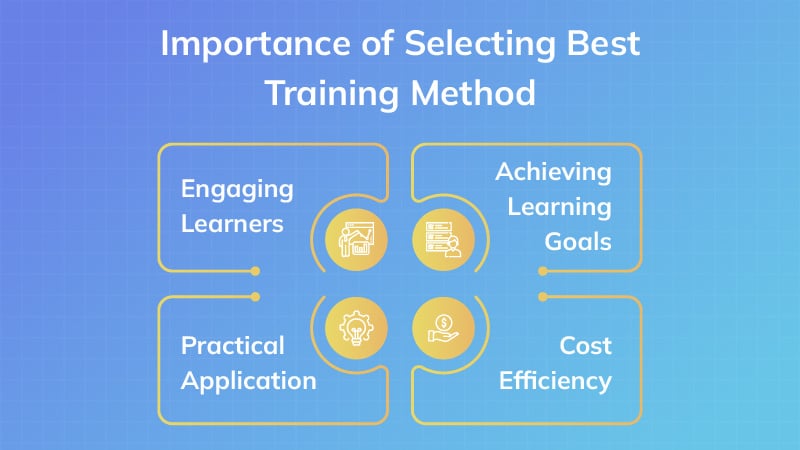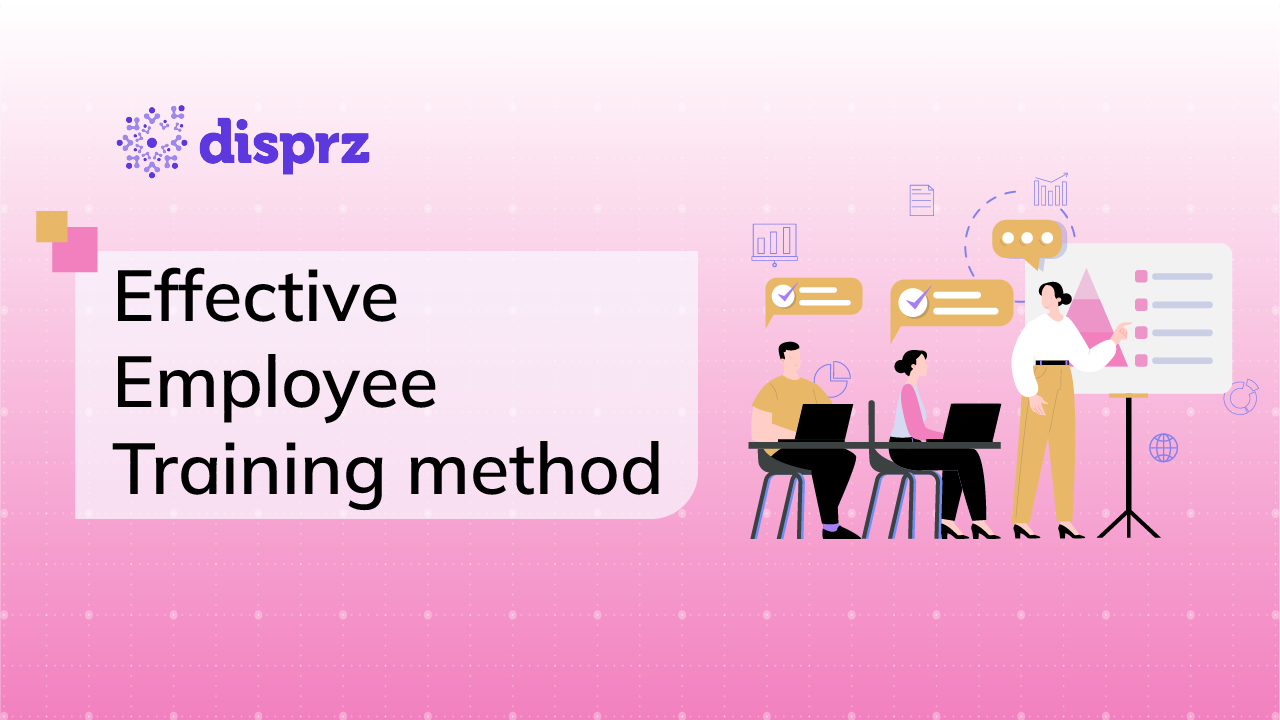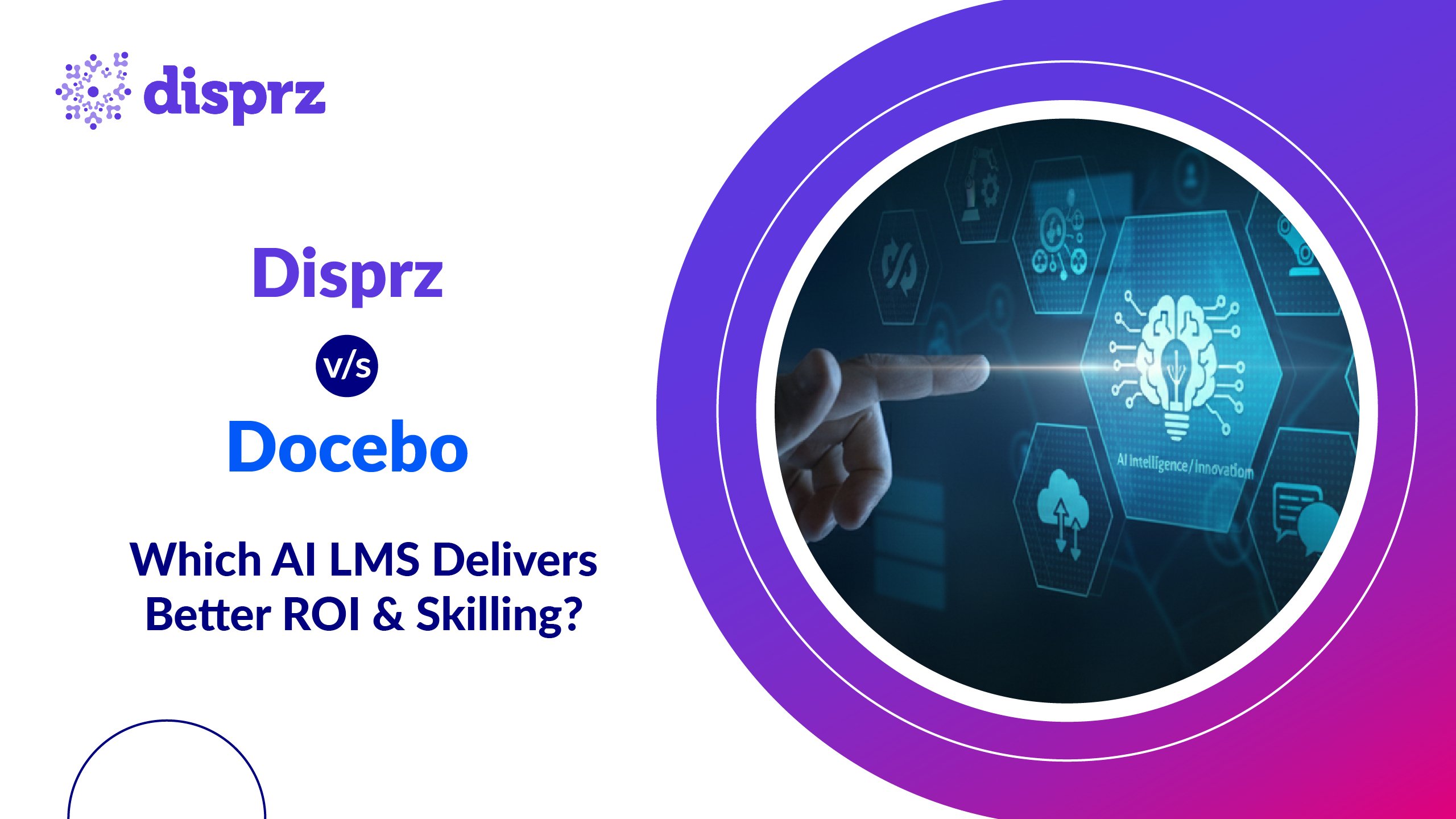Introduction to Employee Training Methods
In today’s dynamic work environment, investing in effective employee training methods is more crucial than ever. As organizations adapt to new technologies and changing workforce expectations, adopting structured training strategies is key to achieving employee training success. These methods not only help bridge skill gaps but also promote employee upskilling, increase engagement, and drive performance.
From traditional classroom sessions to immersive digital learning experiences, organizations now have a range of options to train their workforce. But choosing the right method depends on your business goals, learner preferences, and available resources. This guide explores the most impactful approaches and how to align them with your training objectives.
Importance of Selecting the Best Training Method for Employees
Choosing the right training method is crucial in today’s competitive environment, as it significantly influences the success of learning programs. But why is this choice so important?

Engaging Learners
Adapting employee development methods to fit different learning styles boosts participation and training effectiveness. This ensures that each individual remains engaged, maximizing the overall impact of the learning experience.
Achieving Learning Goals
The chosen methods of training serve as a roadmap to reach specific skill or interpersonal development objectives. By clearly defining these goals, organizations can better align their training initiatives with overall business objectives.
Practical Application
Effective employee development methods ensure that participants can apply what they’ve learned in practical, real-world situations. This hands-on experience reinforces their skills, making the learning process more impactful and relevant to their daily responsibilities.
Cost Efficiency
Selecting the right methods of training optimizes resource use and reduces costs. This strategic approach allows organizations to maximize their training budget while ensuring employees receive valuable learning experiences.
Key Factors to Consider While Selecting the Training Methods
Understanding Learner Preferences
Gathering feedback helps leaders choose the best methods of training that cater to learners' interests and capabilities. By actively involving employees in the process, organizations can create a more engaging and relevant learning environment.
Setting Clear Objectives
Clearly defined outcomes are vital for successful employee development methods. This clarity ensures that all stakeholders are aligned and focused on achieving the desired results throughout the training process.
Considering Organizational Limits
Evaluating available resources, budget, and time is crucial when implementing methods of training. This assessment helps organizations select approaches that are both feasible and sustainable, ensuring effective training without straining existing capacities.
Assessing Content Complexity
The difficulty and type of material are key considerations when designing effective employee development methods. By matching content with the learners' capabilities, organizations can enhance engagement and facilitate better understanding, leading to more successful training outcomes.
6 Best Practices for Employee Training Methods
To maximize the effectiveness of any training initiative, organizations must follow proven best practices.
Here are some key recommendations:
1) Align with business goals
Start with a clear understanding of what the training needs to achieve; whether it's compliance, performance improvement, or skill development.
2) Leverage technology
Use Learning Experience Platforms (LXPs), mobile learning apps, or AI-powered tools to personalize and scale training.
3) Incorporate gamification in training
Add interactive quizzes, badges, or leaderboards to make learning more engaging and motivating.
4) Focus on microlearning
Deliver bite-sized modules that are easier to absorb and retain, especially for on-the-go learners.
5) Measure training effectiveness
Track metrics such as knowledge retention, learner progress, and post-training performance improvements to evaluate ROI.
6) Encourage continuous feedback
Create a feedback loop with employees and managers to keep refining the program.
By following these best practices for employee training, organizations can create learning programs that are not only effective but also agile and future-ready.
Top 10 Employee Training Methods
Selecting the right employee training methodologies can be a complex process that demands thoughtful planning and strategy. It can feel overwhelming for those responsible for employee development, particularly since training efforts often require significant time and investment.

To assist in this, here are the top 10 types of training methods designed to keep your workforce engaged and improve their learning experience.
1) Instructor-Led Training (ILT)
Human interaction remains one of the most impactful kinds of training methods for employees. ILT connects experts and learners in a physical or virtual space, allowing for personalized attention, active engagement, and immediate feedback.
Here are the benefits of this training method for employees:
-
Direct communication with instructors and peers helps combat social isolation.
-
Quick and effective responses to any questions that arise during the session.
-
Ideal for addressing complex topics that need tailored guidance and detailed explanations.
2) On-The-Job Training (OJT)
Practical experience is essential, and OJT enables staff to learn by doing their everyday responsibilities. This staff training method involves employees working alongside experienced colleagues, gaining first-hand skills, and observing real-time processes. OJT accelerates the acquisition of job-specific knowledge, boosting both confidence and capability.
Benefits of OJT include:
-
One of the most effective staff training methods for succession planning.
-
Facilitates quick learning by immersing employees in real-world scenarios.
3) eLearning
Online training has transformed employee development by removing the need for physical classrooms, making it cost-efficient and accessible. Through interactive modules, videos, and quizzes, employees can learn at their own pace, anywhere, ensuring continuous growth. This staff training method is ideal for large teams, remote workers, or frequent job changers.
Key benefits include:
-
Engaging, gamified online courses.
-
Mobile-friendly learning on the go.
-
Lower costs with less instructor involvement.
-
Flexibility for employees to learn at their convenience.
-
LMS data to assess training ROI and effectiveness.
4) Simulation-Based Training
For practicing intricate or high-risk tasks, simulation-based training offers a secure, controlled environment. Employees can hone their abilities by navigating realistic scenarios, and improving decision-making, problem-solving, and critical thinking without the pressure of real-world consequences.
Key advantages of this training method include:
-
Practical, hands-on learning with consistent results.
-
Individual skill development tailored to job-specific challenges.
-
Safe exposure to potential workplace obstacles for better preparedness.
5) Gamification
Training can be engaging and enjoyable by incorporating game-like features such as points, badges, and rewards. Gamification makes learning more immersive, encouraging employees through competition and boosting retention. This approach fosters active participation and ensures knowledge is absorbed in an exciting way.
Key benefits of game-based training include:
-
Increased learner engagement and completion rates due to the fun, goal-oriented format.
-
Instant feedback during gameplay accelerates improvement and understanding.
-
Rewards and badges enhance motivation and drive continued learning.
6) Social and Collaborative Learning
This approach leverages peer interaction for knowledge exchange, allowing employees to learn through observation, imitation, and shared experiences. It enhances the training experience by capitalizing on collective expertise.
Advantages of collaborative training:
-
Encourages continuous learning by promoting teamwork and knowledge sharing.
-
Cost-effective and time-efficient as group learning reduces resource strain.
-
Strengthens memory retention through active participation and collaboration.
7) Mentoring and Coaching
These programs pair experienced professionals with mentees, fostering a one-on-one relationship that encourages guidance, experience sharing, and personalized feedback. By leveraging the knowledge of seasoned employees, individuals enhance their skills, build leadership qualities, and effectively navigate career advancement.
Key advantages of mentor-mentee relationships:
-
Fosters lasting connections even after training concludes.
-
Provides a comfortable environment for mentees to ask questions they might avoid in group settings.
-
Employees observe and learn directly from real-time examples set by their mentors.
-
According to Gallup’s 2023 Guide, companies are advised to engage employees by utilizing their strengths and incorporating coaching conversations into their development.
8) Mobile Learning
In the age of smartphones, mobile learning offers learners flexibility and convenience by delivering training through devices. It utilizes bite-sized content, such as microlearning modules, podcasts, and videos, to provide accessible learning opportunities.
Mobile learning advantages:
-
Accessible anytime and anywhere using mobile devices.
-
Easily integrated into daily routines.
-
Interactive features boost engagement and knowledge retention.
-
Provides quick access to specific skills or topics in small, digestible units.
9) Role Playing
This method simulates real workplace scenarios, allowing employees to practice handling various situations, especially useful for customer-facing roles. Role-playing enhances communication and problem-solving skills through active participation.
Role-playing benefits include:
-
Increased engagement through realistic scenarios.
-
Encourages the development of critical thinking and problem-solving abilities in real time.
-
Prepares employees for handling difficult customer interactions effectively.
-
Improves customer service by honing interaction skills.
10) Blended Learning
This approach combines traditional in-person instruction with digital learning tools, creating a hybrid educational model. It offers the best of both worlds, integrating face-to-face interaction with the flexibility of online resources.
Benefits of blended learning include:
-
Learners can access digital content on their own schedule, catering to diverse learning styles.
-
Personalized learning paths allow for focus on individual goals and interests.
-
Online activities paired with in-person discussions enhance engagement and participation.
-
Promotes teamwork through virtual forums, group assignments, and classroom interactions.
-
Reduces costs related to materials and travel that come with standard training methods.
Conclusion: Choosing Right Training Methods For Your Team
Selecting your team's most suitable training approach is key to fostering skill growth and driving business success. By leveraging the Disprz learning platform, you can easily implement various employee training methodologies tailored to your organization’s needs. Whether through personalized learning paths, interactive modules, or data-driven insights, Disprz empowers you to deliver impactful training that enhances employee performance, boosts engagement, and ensures continuous development.
With its flexibility and scalability, Disprz is an ideal solution for aligning your training strategies with business goals, helping your workforce thrive in an ever-evolving workplace.
FAQs
1) How can I measure the success of my training methods?
You can measure training effectiveness using key metrics such as course completion rates, knowledge assessments, employee feedback, and post-training job performance. Platforms such as Disprz also offer advanced analytics to track learning impact across roles and business functions.
2) How does technology improve employee training?
Technology enables scalable, personalized, and engaging learning experiences. From AI-driven content recommendations to gamified modules and mobile learning, digital tools help in delivering training anytime, anywhere—crucial for employee upskilling and agility.
3) Why is microlearning popular for employee training?
Microlearning is effective because it delivers concise, focused content in a format that fits easily into daily work routines. It's ideal for busy employees and supports better knowledge retention, making it a popular strategy for employee training success.








